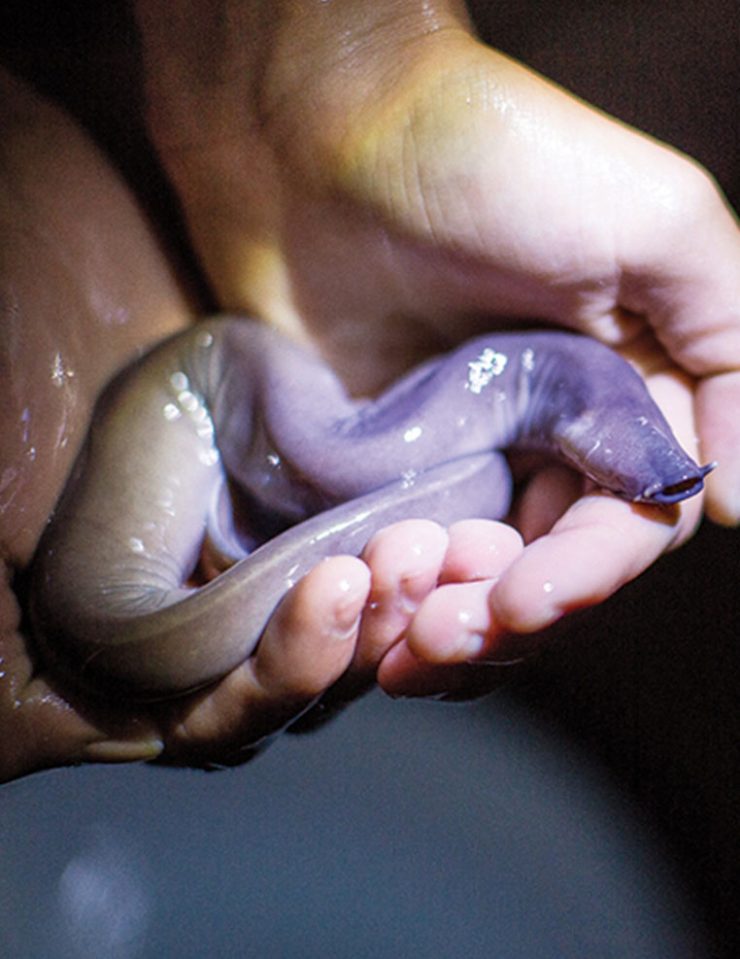A new study by Chapman University and University of New Hampshire researchers reveals the defensive slime produced by hagfish likely evolved from cells in the surface layer of their skin. The expanding slime that adheres to the mouth of its predator is one of the most remarkable defense mechanisms in the animal kingdom and these discoveries could inspire future products that mimic the super-powered slime.
While evolutionary biologists, marine biologists, and those studying the ecology of predator-prey interactions might be interested in the evolution of these adaptive traits, Chapman University researcher Yu Zeng says their findings might motivate biophysicists and bioengineers to develop new materials with similar properties such as adhesives that work underwater or protective gear and equipment. Zeng led the team of undergraduate researchers with Douglas Fudge, professor of biological sciences at Chapman University’s Schmid College of Science and Technology and David C. Plachetzki, a professor at the University of New Hampshire.
The new, National Science Foundation-funded research “Epidermal threads reveal the origin of hagfish slime” was published in the journal eLife this month, offering new insight into the lives of the hagfish — a deep-sea eel-like animal that represents one of the oldest living relatives of animals with backbones. This unique and resilient animal has been around for over 300 million years and pre-dates the evolution of dinosaurs.
“To defend themselves against predators, hagfish produce a slime that is reinforced with fibers and can clog a predator’s gills, thwarting the attack,” says Zeng, who worked three years on the study while working as a research associate at Chapman University. The slime deploys in less than half a second, exuding from specialized glands on a hagfish’s body and expanding up to 10,000 times its ejected volume.”
The findings suggest that ancient hagfishes first evolved the ability to produce slime with anti-predator effects when their skin was damaged in attacks. This unique trait may have led to the appearance of increasingly specialized glands and the animal’s ability to produce and store more slime and eject it quickly.
About Chapman University
Founded in 1861, Chapman University is a nationally ranked private university located in Southern California. Chapman is categorized by the Carnegie Classification as an R2 “high research activity” institution and offers personalized education to more than 9,000 undergraduate and graduate students. The campus has produced a Rhodes Scholar, been named a top producer of Fulbright Scholars, and hosts a chapter of Phi Beta Kappa, the nation’s oldest and most prestigious honor society. Based in the City of Orange, Chapman also includes the Harry and Diane Rinker Health Science Campus in Irvine. In 2019, the university opened its 11th college, Dale E. and Sarah Ann Fowler School of Engineering, in its newest facility, Keck Center for Science and Engineering. Learn more about Chapman University: www.chapman.edu.




